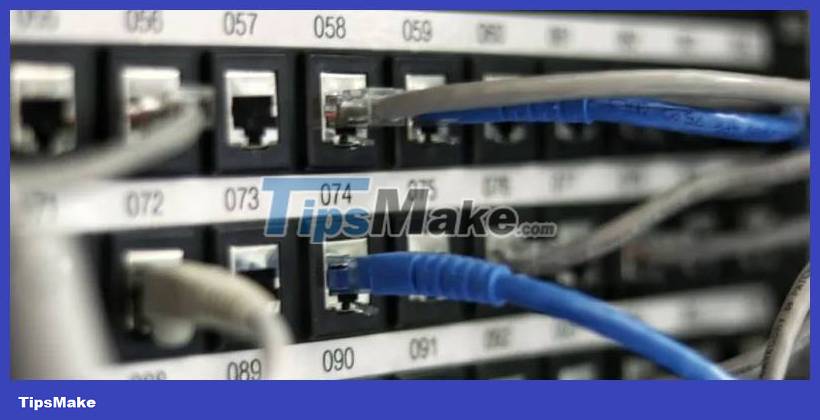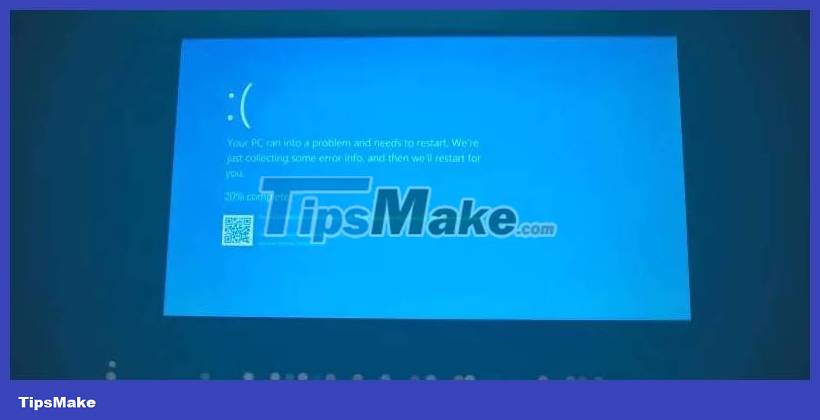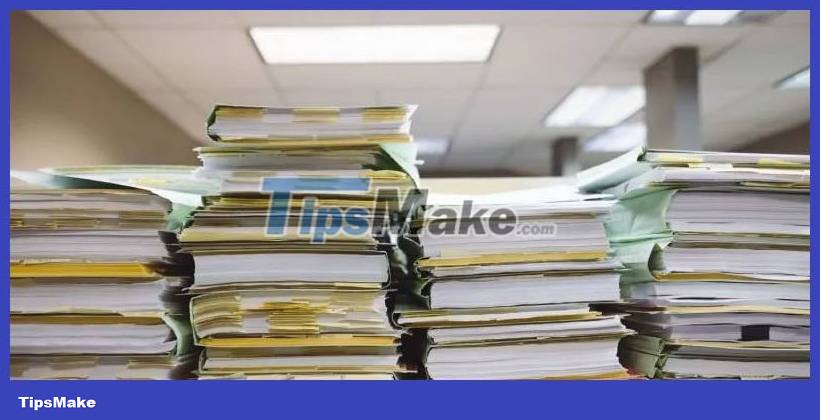What can be deleted in Windows Disk Cleanup?
Most people know that Disk Cleanup utility in Windows can help reclaim storage space on their PC. With just one click, the app will scan your device and show you lots of things that can be deleted. While some of these options are fairly straightforward, others are not. You certainly don't want to accidentally delete something important and face the blue screen of death error. This list includes file types that often appear in the Disk Cleanup utility and indicates whether they are safe to delete.
File Delivery Optimization
These files can easily consume gigabytes of storage space; however, it is not clear what they actually are. Disk Cleanup just says it's safe to delete them if you're not using them. But what are they?
Basically, Delivery Optimization files are Windows update files. When Microsoft releases updates for Windows, many PCs are set up to automatically download updates. This can put a strain on Microsoft's servers.

Therefore, to ensure that everyone receives timely updates, individual Windows PCs are set up to store copies of those update files for distribution to other Windows PCs. It's basically like torrenting a file. Unfortunately, these files are stored on your PC's storage drive, taking up space. Thankfully, you can safely delete them.
File Language Resource
These files are related to the various language packs that come with Windows. They ensure the correctness of language-related processes when using your PC. The files include several different languages, dictionaries, spelling and grammar rules, as well as keyboard layouts. If you believe you will never need another language on your system, you can delete them. But please note that it doesn't recover much space, so you can leave them alone.

File System Error Memory Dump
System Error Memory Dump files are created whenever your machine encounters a major error or the dreaded blue screen of death problem. Windows keeps only one of these dump files at a time, overwriting that file every time you have a problem. These files can be quite large because they contain a lot of data.

With the .DMP extension, dump files can be used to diagnose system problems. Even so, the average user might not be interested in discovering the technical reasons for the malfunction. However, you can submit them to Microsoft for analysis, identifying bugs, and potentially fixing them with future updates. If not, please delete them.
File System Error Minidump
File System Error Minidump is like the annoying brother of System Error Memory Dumps. They also provide data that can help a programmer or developer debug problems a system is experiencing. If those things don't interest you, delete them.
Temporary files
Temporary files are created by applications on your PC. They are used by the application to run more efficiently. Usually, they are automatically deleted; however, you can manually delete them if you wish.

Temporary Internet files
When you browse the web, some bits are stored on your computer. This is done so that these web pages load faster the next time you visit them. This is called browser cache. You can choose to clear your browser cache, but may want to rethink this. Deleting these files can really slow down your browsing experience. Furthermore, the deletion is not permanent. As you browse the web, your browser collects these bits again.
Thumbnails
When you open a folder containing files such as documents or pictures, Windows creates a thumbnail image for you to quickly identify the file. You can delete these thumbnails if you want with Disk Cleanup. But if you access a folder containing these files again, Windows will regenerate these thumbnails.
Windows Error Reporting
Windows Error Reporting (WER) is a Windows function that dates back to Windows XP. When a program crashes or the system crashes, a .WER file is created. These reports collect data about the system's hardware and software configuration and what happened. They are automatically submitted to Microsoft for evaluation. Archived .WER files appear when you run Disk Cleanup. These reports have been submitted to Microsoft, so unless you want to try and resolve the issue yourself, you can safely delete them.
File Windows ESD Installation
You probably won't come across Windows ESD Installation files when running a Disk Cleanup scan. Microsoft removed the option from Disk Cleanup in later versions of Windows.
The Windows ESD Installation files are what allow your PC to reset itself to factory settings. In general, these files are quite large. This makes them pretty tempting to delete, you can reclaim gigabytes of storage. However, the article recommends that you do not delete these files. If you have a serious problem that requires you to reset your PC, you won't be able to.
Windows upgrade log file
These files are less mysterious. Whenever Windows upgrades through updates, a log file is created. These log files can be used to identify and fix problems that occur when your system updates. But if you don't have any problems with the recent update, you can safely delete these files.

Clean Windows Update
Whenever you update Windows, your system keeps older versions of system files on your hard drive. These files allow you to uninstall updates if you're having issues, to roll back to an older, more stable version of Windows. In most cases, you can delete these files, as long as your PC is running smoothly. However, if you're experiencing persistent issues, you may want to keep these issues to rollback to an update to determine if the upgrade is the source of the problem.
You should read it
- Error missing Disk Cleanup on Windows 10/8/7, this is a fix
- Cleanup.pictures - Download the latest Cleanup.pictures here
- Which system cleanup utility should be used for Windows?
- How to Free up Hard Disk Space on Windows Vista
- Automate maintenance tasks for Windows computers
- How to delete a drive cannot be deleted with Disk Management
- 4 ways to delete Windows.old folder on Windows 10 computer
- Detect and remove stealth software using Chrome with the Chrome Cleanup Tool
May be interested
- Fix 100% Full Disk error on Windows with the following 14 tips
 100% full disk error or 100 disk error is probably no stranger to windows 10 / 8.1 users. not only on windows 8.1, but you can also get a 100% full disk error on windows 7 or windows 8. every time you open task manager to see details of activities, the disk tab is always red, with 99%, 100% or always account for 90% or more.
100% full disk error or 100 disk error is probably no stranger to windows 10 / 8.1 users. not only on windows 8.1, but you can also get a 100% full disk error on windows 7 or windows 8. every time you open task manager to see details of activities, the disk tab is always red, with 99%, 100% or always account for 90% or more. - What is a disk signature? Fix disk signature conflict error
 a disk signature is a unique, defined number of a hard drive or data storage device, stored as part of the master boot record (mbr).
a disk signature is a unique, defined number of a hard drive or data storage device, stored as part of the master boot record (mbr). - How to clean up Windows 10 according to the timetable
 with older versions of windows 10, to clean the system according to the timetable we can rely on the settings available on the computer.
with older versions of windows 10, to clean the system according to the timetable we can rely on the settings available on the computer. - 6 steps to improve Windows XP speed
 if your computer is kind of sluggish, but you still don't have the new shopping conditions, then the following simple and quick but very effective settings are available
if your computer is kind of sluggish, but you still don't have the new shopping conditions, then the following simple and quick but very effective settings are available - 4 ways to delete Windows.old folder on Windows 10 computer
 instructions on how to delete the windows.old folder on windows 10 with ccleaner, disk cleanup, command prompt, easy and fast storage feature. click view now!
instructions on how to delete the windows.old folder on windows 10 with ccleaner, disk cleanup, command prompt, easy and fast storage feature. click view now! - Difference between Recovery Disk and Repair Disk
 windows desktops and laptops very rarely fail to boot. however, when they don't start up as expected, a recovery drive or a system repair disk can be extremely helpful 'lifesavers'.
windows desktops and laptops very rarely fail to boot. however, when they don't start up as expected, a recovery drive or a system repair disk can be extremely helpful 'lifesavers'. - Remove the Windows.old folder in Windows 8
 windows.old folder also appears when you proceed refresh in windows 8. besides, this folder will also appear when you install customizations in windows 8 or you do not format the partition before installing windows .
windows.old folder also appears when you proceed refresh in windows 8. besides, this folder will also appear when you install customizations in windows 8 or you do not format the partition before installing windows . - Rescue the system with these 5 bootable Windows PE recovery disks
 every windows user should have at least one windows system rescue disk available to use handy tools in the recovery environment to repair windows or at least diagnose the problem.
every windows user should have at least one windows system rescue disk available to use handy tools in the recovery environment to repair windows or at least diagnose the problem. - Instructions to fix Windows 7 installation error
 in this article, i will show you how to fix the error that occurs when installing windows 7 in the in-place upgrade option.
in this article, i will show you how to fix the error that occurs when installing windows 7 in the in-place upgrade option. - How to fix Windows cannot be installed to this disk. The selected disk has an mbr partition table
 during the installation of windows operating system, some users reported they encountered the error 'windows cannot be installed to this disk. the selected disk has an mbr partition table'. in the following article, tipsmake will guide you in some ways to fix the 'windows cannot be installed to this disk. the selected disk has an mbr partition table'
during the installation of windows operating system, some users reported they encountered the error 'windows cannot be installed to this disk. the selected disk has an mbr partition table'. in the following article, tipsmake will guide you in some ways to fix the 'windows cannot be installed to this disk. the selected disk has an mbr partition table'










 How to Create Custom Snap Layouts in Windows Using PowerToys
How to Create Custom Snap Layouts in Windows Using PowerToys How to delete the Windows.old folder in Windows 11
How to delete the Windows.old folder in Windows 11 How to connect Remote Desktop without password in Windows 11
How to connect Remote Desktop without password in Windows 11 7 ways to fix Windows Updates not working error
7 ways to fix Windows Updates not working error How to fix 'Please Wait for the GPSVC' loop error
How to fix 'Please Wait for the GPSVC' loop error How to change the Task Manager start page in Windows 11
How to change the Task Manager start page in Windows 11